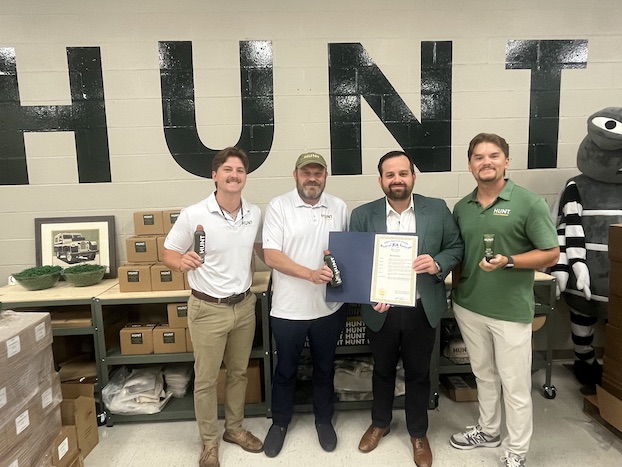Mixed reviews for weekend teal outing
Published 5:53 pm Sunday, September 24, 2017
Grandson Peyton and three of his LSU fraternity brothers came over for a teal hunt last weekend.
Their story wasn’t an outstanding one as they averaged about two birds per hunter. They did agree, though, that to get away from studies for just one day was worth the trip.
Trending
They hunted some flooded fields southwest of Hackberry and their story was one of early success and then not much later.
“We did see a bunch of teal,” Peyton said, adding that most of their bag was taken early.
“The fog came in and that pretty much shut the hunting down,” he said. “When it lifted we hit a few more but the big bunches were flying high and we couldn’t get them to come down.
“Probably about 9:30 we went on in.”
This group’s story was just about the same for others hunting the marsh and fields in the lower part of the area — seeing good groups of birds but most flying high.
Also south of town was Mike Soileau and his group, hunting a flooded pasture around the Bell City area.
Trending
He said they totaled 10 birds and, like the LSU students, they saw a lot of birds but all were high.
Soileau did say that he knew prior to the opening of the season that good groups of teal would be down.
“Every year I can tell because when the humming birds return, the teal come at the same time. It always happens. We’ve had humming birds fighting over the feeder for the past 10 days,” he added.
Closer in and north of the interstate in rice fields and pastures, hunters were seeing and bagging good groups of teal.
l
Larry Reynolds, the Louisiana Department of Wildlife and Fisheries waterfowl study leader, came out with his aerial survey late last week and the report noted a strong number of teal.
In Southwest Louisiana the survey produced an estimate of 365,000 blue-winged teal (373,000 total for the entire state).
“(The) estimate of 373,000 blue-winged teal is nearly four times last September’s estimate of 97,500 and is well above both the most recent five year average of 136,000 and the long-term average of 231,000. It is the highest estimate since 457,000 blue-wings were seen in 2008,” he wrote in a report.
“As in past years, the overwhelming majority of blue-wings in SW Louisiana were counted in the agricultural habitat with large concentrations seen in fields north of Lacassine NWR, southwest of Gueydan and north of Intracoastal City.
“Habitat conditions are currently characterized by high water levels in coastal marshes and higher than average flooding in agricultural areas in the western portion of the SW La. survey region.
“The heavy rain from hurricane Harvey still covers some roads, has left water in many pastures and produced marsh water levels 1-2 feet above normal in this region.
“Clearly, conditions have been conducive to moving a larger than average number of blue-wings into Louisiana. Although wetland habitat conditions are good in states to the north of us, early cold fronts provided unseasonably cool weather over the past week. High water levels (in coastal marshes) are currently providing sub-optimal foraging opportunities, so it may be difficult to hold migrants in those habitats compared to shallow flooded fields and pastures of the agricultural region.”





